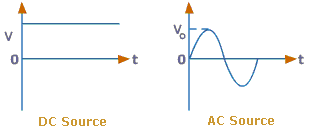Built In Blocking Diode Solar Panel :
Basically there are two types of Diodes in the Solar Panel,
1) Blocking Diode ,
As though in the picture given in the left there is only Bypass diodes are showing because it is a built in blocking diode Solar Panel that's mean the blocking diode is in the panel construction...
Both Blocking diodes and Bypass diodes are important for solar panel, And I will explain why in the following section,...
Before start, I want to tell you what is diode at first, Diode is a device which rectify the electricity in one direction.. If diode use in the circuit then we can control the current in one direction..
 Blocking Diode : Blocking Diode is very important for the solar panel...it stops the current coming out of battery to Solar Panel. At day time battery get charged by the solar panel and at night we feed our electrical loads using the battery current , if there is no blocking diodes in between battery and solar panel then there will be current flow from battery to solar panel which can harm both battery and solar panel...
Blocking Diode : Blocking Diode is very important for the solar panel...it stops the current coming out of battery to Solar Panel. At day time battery get charged by the solar panel and at night we feed our electrical loads using the battery current , if there is no blocking diodes in between battery and solar panel then there will be current flow from battery to solar panel which can harm both battery and solar panel...
The purpose of the Blocking diodes to protect Battery & Solar Panel
Bypass Diode :
 Bypass diodes are also work as the blocking diode, but this case bypass diode help the solar system circuit to fight against the shading problem..By chance if one of array of solar cells get shaded then because of the bypass diode only partial part of the solar panel will stop and other part will produce electricity, if there is no bypass diode then the entire solar panel will stop working by shading...So check your solar panel manufacturer whether your solar panel has built in bypass diodes , if not then you have to extra careful about shading effect on solar panel...
Bypass diodes are also work as the blocking diode, but this case bypass diode help the solar system circuit to fight against the shading problem..By chance if one of array of solar cells get shaded then because of the bypass diode only partial part of the solar panel will stop and other part will produce electricity, if there is no bypass diode then the entire solar panel will stop working by shading...So check your solar panel manufacturer whether your solar panel has built in bypass diodes , if not then you have to extra careful about shading effect on solar panel... Like the picture left, the bypass diodes are connected
to the solar panel parallel, so if one of the particular
solar panel get shaded, then only that one will stop other one will be active and solar system will not entrely shut down,,
So Bypass diodes are there to help us to decrease the effect of shading..
Hope you like this post (Jajakallahu khair)




















